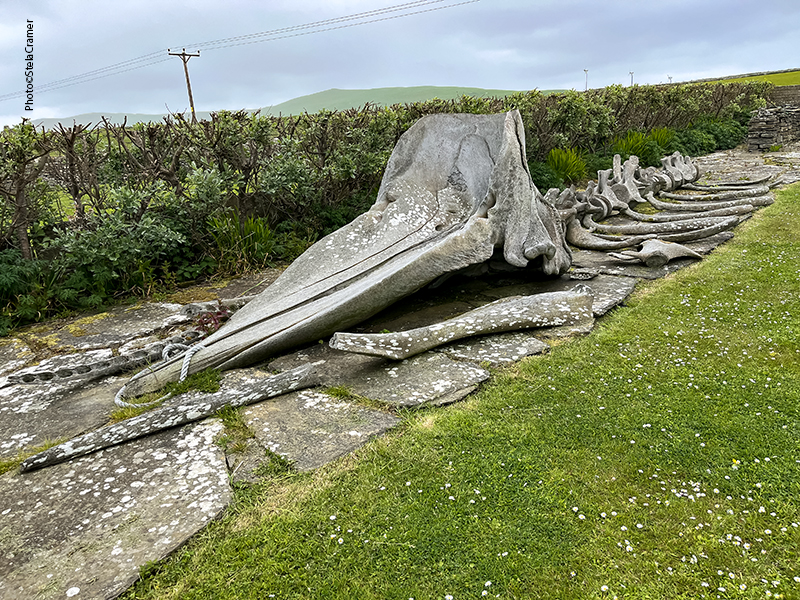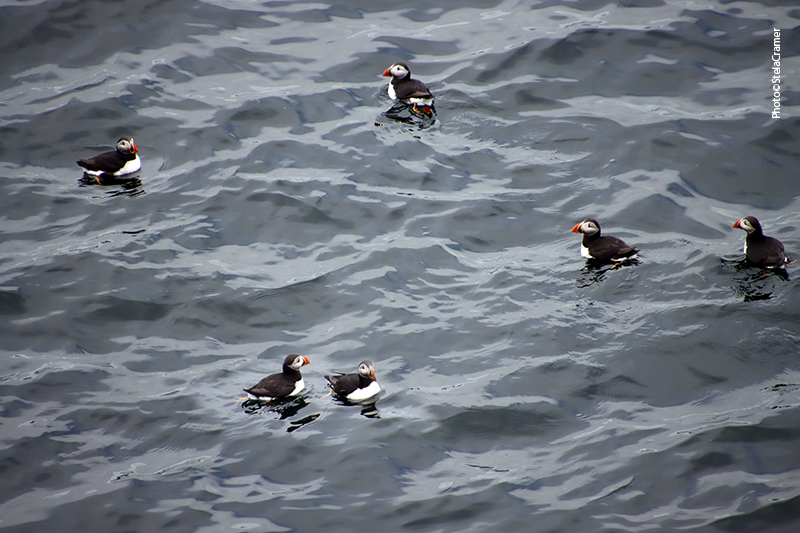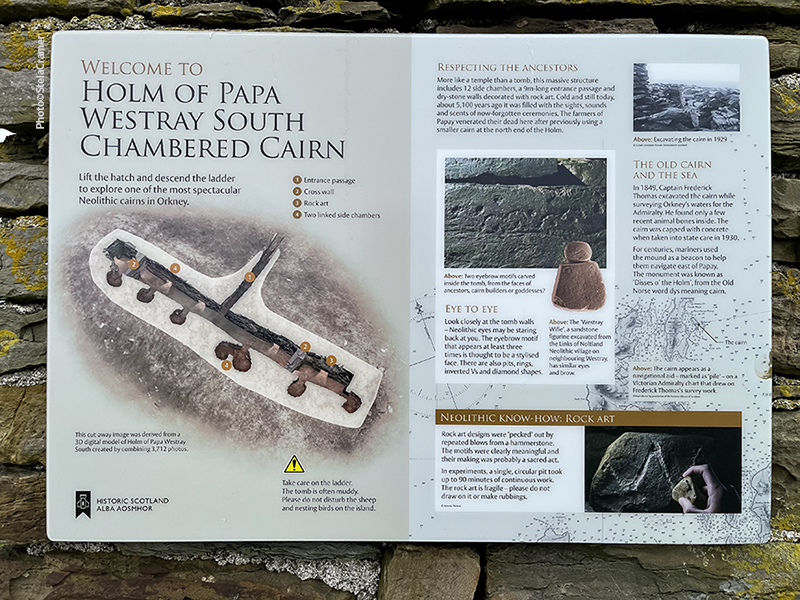

O Hotel Pierowall pertence a uma senhora que o gerencia com as filhas, todas muito simpáticas. Há outras opções de hospedagem, mas basicamente casas para alugar, mais distantes do centro. Viajando sozinha, fazia mais sentido ficar perto de transporte, com café da manhã e restaurante para jantar. Aliás, a comida era excelente! O restaurante estava sempre movimentado, com turistas e locais. Encontrei o hotel, assim como contato dos guias, no site Orkney.com .
Pierowall Hotel is a family business; the lady who runs it and her daughters are just lovely. There are other lodging options, but mostly self-catering and houses for rent, further away. As a solo traveller, it was convenient to stay near all transport, with breakfast included, and restaurant on site for dinner. By the way, excellent food. Place was busy on daily basis with visitors and locals. I found the hotel and guide’s contact in the Orkney.com website.

Uma pequena estatueta entalhada em arenito foi encontrada numa escavação em Westray (Links of Noltland) em 2009 e logo batizada “Vênus de Orkney”, ou “Mulher de Orkney”. É a mais antiga representação da figura humana encontrada na Escócia. A escavação abre durante a temporada, fiquei triste por ainda estar fechada, mas nessas situações penso sempre que é um bom motivo para voltar lá um dia. Retornar é sempre mais fácil do que ir pela primeira vez. Enquanto isso, aqui fica um link para visualização em 3D.
A tiny carved sandstone figurine was found at the Links of Noltand excavation in 2009 and immediately named ‘the Orkney Venus’ (known locally as ‘the Westray Wife’). It’s the earliest representation of a human found in Scotland. The Links of Noltand excavation is open seasonally; I was frustrated because it wasn’t open yet. But that’s a good reason to go back there one day. Returning is always easier than going for the first time. Meanwhile, the link above provides a 3D view of the site.



“Tangle dykes” eram estruturas de pedra onde eram armazenadas longas algas (tangle), parecidas com corda, que eram coletadas na praia e ficavam ali secando durante o inverno, e no verão despachadas por navio para processamento. Faziam espessantes e estabilizantes utilizados na fabricação das coisas mais variadas, desde sorvete até massa para modelagem de dentes. A atividade se encerrou em 1998; nesta época as pessoas que coletavam as algas recebiam 176 libras por tonelada de alga seca, equivalente a 4 toneladas da alga original.
Tangle dykes were stone structures where locals used to gather long rope-like seaweed over the winter and dried them on the dykes before being shipped away for processing into thickeners and stabilizers in items as diverse as ice cream and modelling material for teeth impressions. By the time the tangle industry ceased in 1998,the tangle gatherers were paid 176 pounds per dry tonne, equivalent to 4 tonnes of wet tangle.

Boat Noust é um abrigo para barcos, a fim de protegê-los da maré alta e das tempestades, construídos de pedra num corte em forma de ferradura. A quantidade de nousts em Westray mostra que em 1870 haviam 254 barcos na ilha. Noust é uma palavra de origem nórdica, como muitas outras, assim como nomes de pessoas e lugares. As Ilhas Orkney pertenciam à Noruega. Em 1468, as ilhas foram cedidas ao rei James III da Escócia, como garantia de pagamento do dote da sua noiva, Margaret da Dinamarca, filha do rei Christian I da Noruega. Passou o tempo e o dote nunca foi pago, assim o arquipélago foi definitivamente absorvido pelo Reino da Escócia em 1472. Atualmente – disse-me um dos guias com quem conversei – existe uma facção popular (mais forte nas Ilhas Shetland) pedindo sua reintegração à Noruega.
Boat Noust is a hull shaped opening cut into the bank, to shelter a boat and keep it safe from storms and high tides. The number of nousts in Westray indicates that in 1870 there were 254 boats on the island. Noust is a nordic word, as many others, including names of people and places. The Orkney Islands were once part of Norway. In 1468, the islands were pledged by Christian I, King of Norway, as security against the payment of the dowry of his daughter Margaret of Denmark, betrothed to James III of Scotland. Time went by and the dowry was never paid, so Orkney was absorbed by the Kingdom of Scotland in 1472. Nowadays, according to one of the tour guides I’ve met, there is a group (stronger in the Shetlands) claiming reinstatement to Norway.


Westray possui cerca de 600 habitantes, e milhares de aves marinhas. Há muito mais aves do que gente. Aqui o santuário dos puffins, que consegui por fim avistar e fotografar.
Westray’s resident population is around 600 people, and thousands of seabirds. There are way more birds than people. Here is the puffins’ sanctuary, where I was able to, at last, watch and depict them.


































































